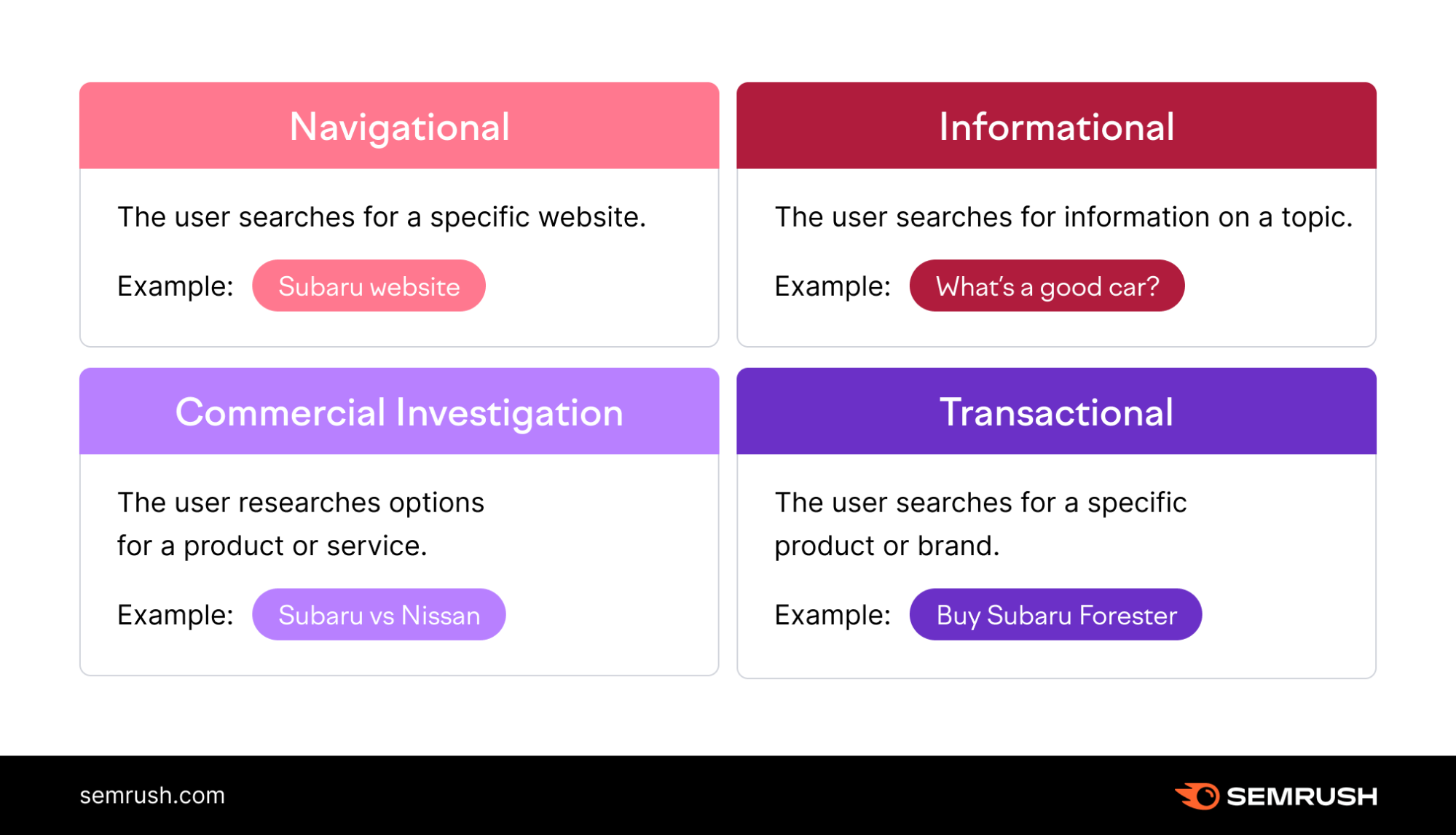Buzz Haven: Your Daily Dose of News
Stay informed and entertained with the latest buzz in news, trends, and insights.
Search Intent Decoded: What Your Keywords Really Mean
Unlock the secrets of search intent! Discover what your keywords truly reveal and boost your SEO game with our expert insights.
Understanding the Four Types of Search Intent: A Comprehensive Guide
When it comes to search intent, understanding the underlying motivations of users is crucial for creating effective SEO content. There are four primary types of search intent: informational, navigational, transactional, and commercial investigation. Each type serves a different purpose and requires a tailored approach to meet user needs. For instance, informational intent often involves users looking for answers to specific questions, making it vital for content to be clear, concise, and authoritative.
On the other hand, navigational intent occurs when users are searching for a particular website or page. This type of intent indicates that users already have a destination in mind, which emphasizes the importance of brand visibility. Transactional intent reflects a user ready to make a purchase, highlighting the need for optimized product pages and clear calls to action. Lastly, commercial investigation signifies users researching products or services before making a decision, requiring content that compares options and provides valuable insights.

How to Align Your Keywords with User Intent for Better SEO
Aligning your keywords with user intent is crucial for enhancing your SEO strategy. To do this effectively, begin by researching the different types of user intent: informational, navigational, commercial, and transactional. For instance, if users are searching for "best running shoes", they likely have commercial intent, indicating they are ready to make a purchase. Understanding these intents will help you tailor your content to meet the specific needs of your audience, ultimately driving higher traffic and engagement.
Once you've identified the user intent behind your keywords, focus on creating content that matches that intent. Use clear and relevant headlines to grab attention and incorporate your keywords naturally within the text. Additionally, consider utilizing structured data to help search engines better understand the context of your content. Improving your site's loading speed and ensuring mobile responsiveness are also key factors that enhance user experience and align with their intent, leading to better SEO outcomes.
What Does Search Intent Mean for Your Content Strategy?
Understanding search intent is fundamental for any effective content strategy. At its core, search intent refers to the reason behind a user's query—what they truly want to find when they type in specific keywords. This can vary from informational, navigational, transactional, or commercial intent. By analyzing these intents, you can tailor your content to meet the needs of your audience, ensuring it resonates more effectively and enhances user engagement.
Incorporating search intent into your content strategy involves not only creating high-quality articles but also optimizing them based on the user's needs. For example, to cater to informational intent, you might provide detailed guides or how-to articles, while for transactional intent, product reviews and comparison pages work best. Therefore, aligning your content with the appropriate search intent can significantly boost your SEO efforts, leading to improved rankings and increased traffic.